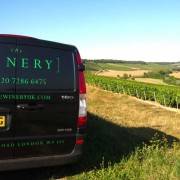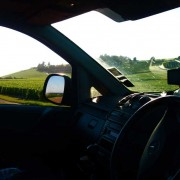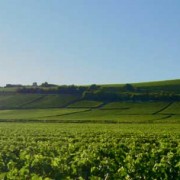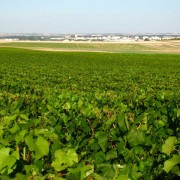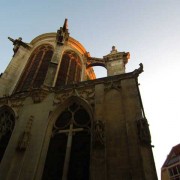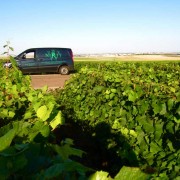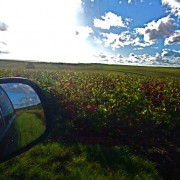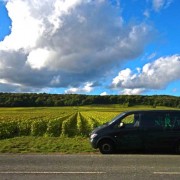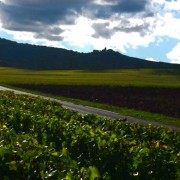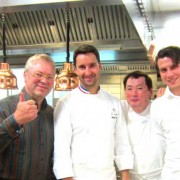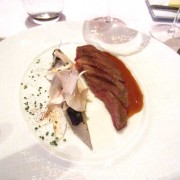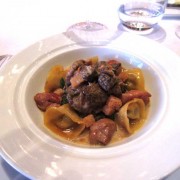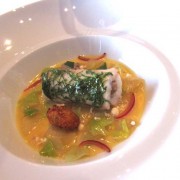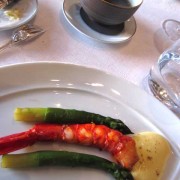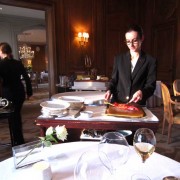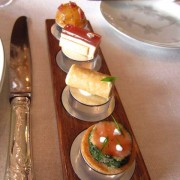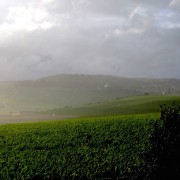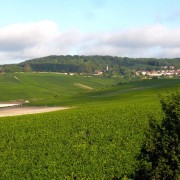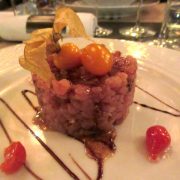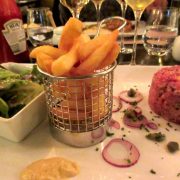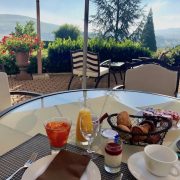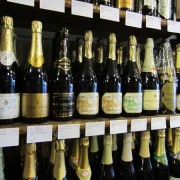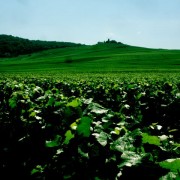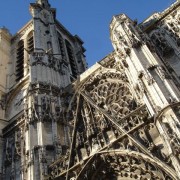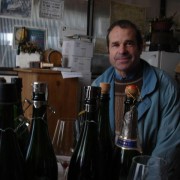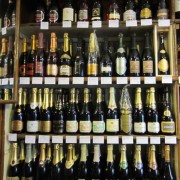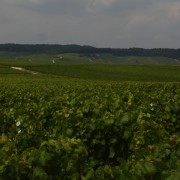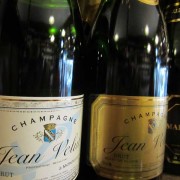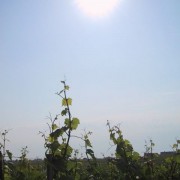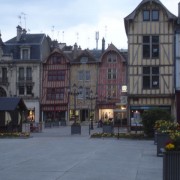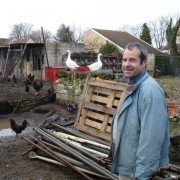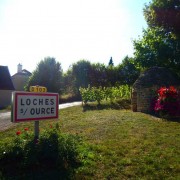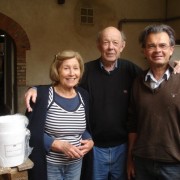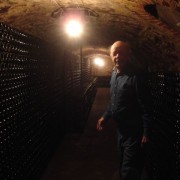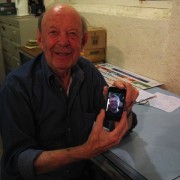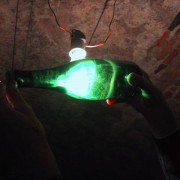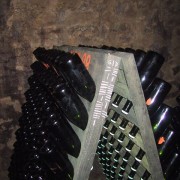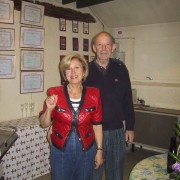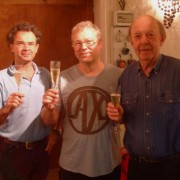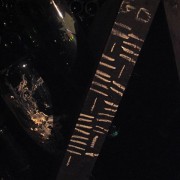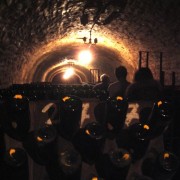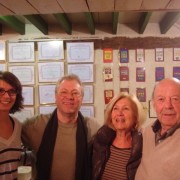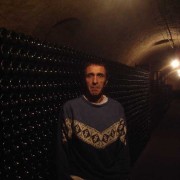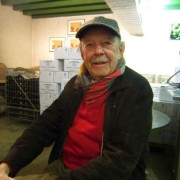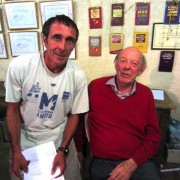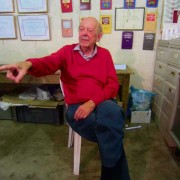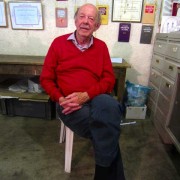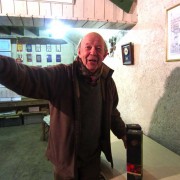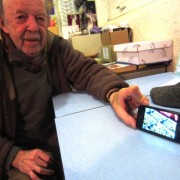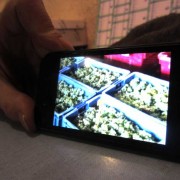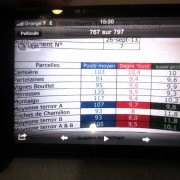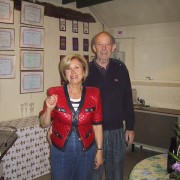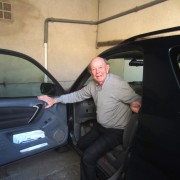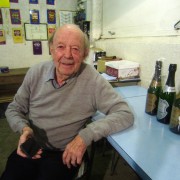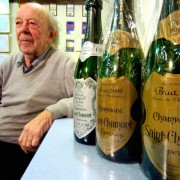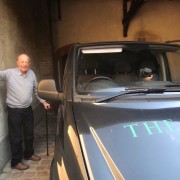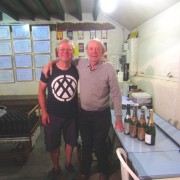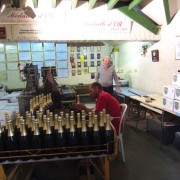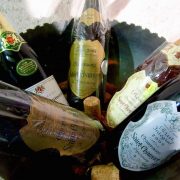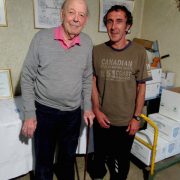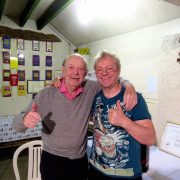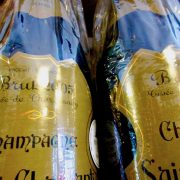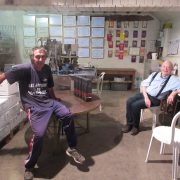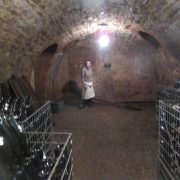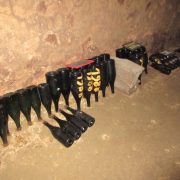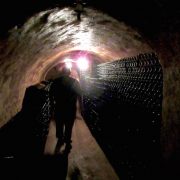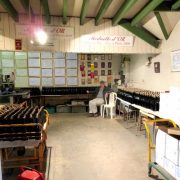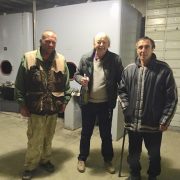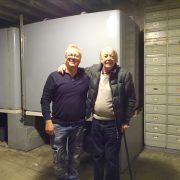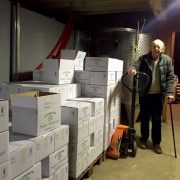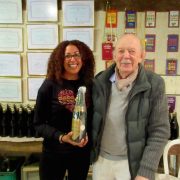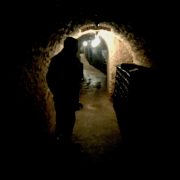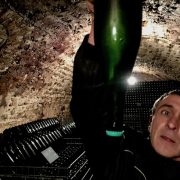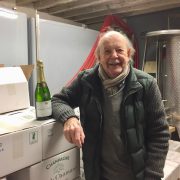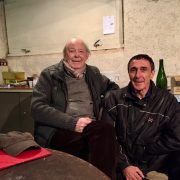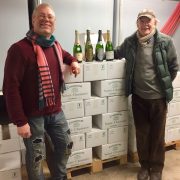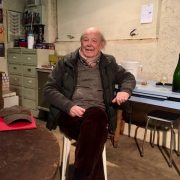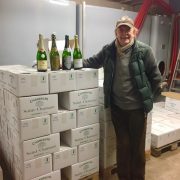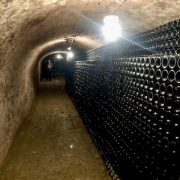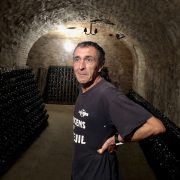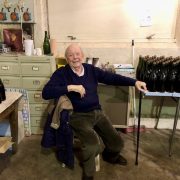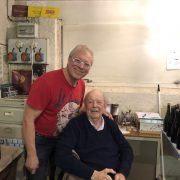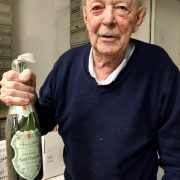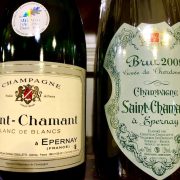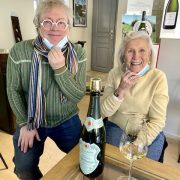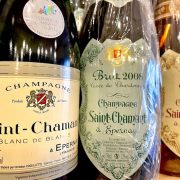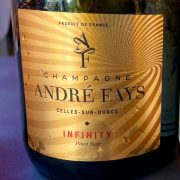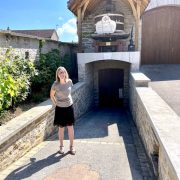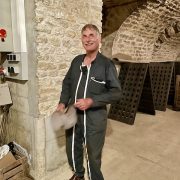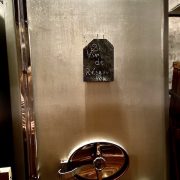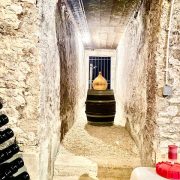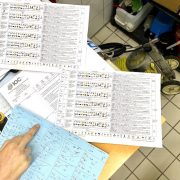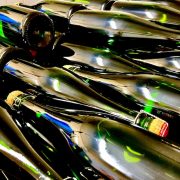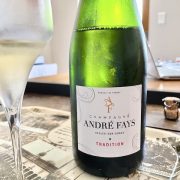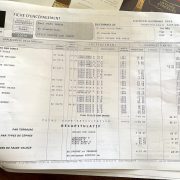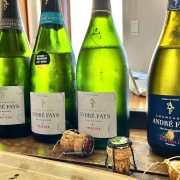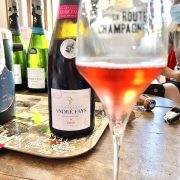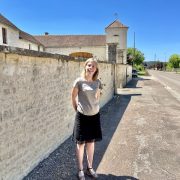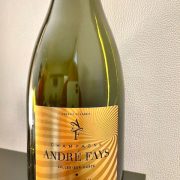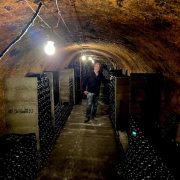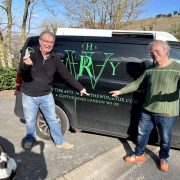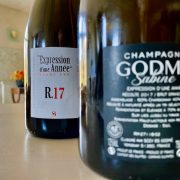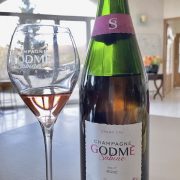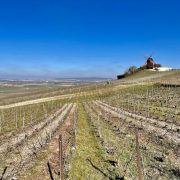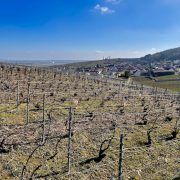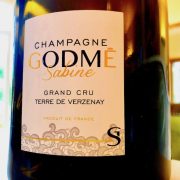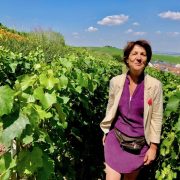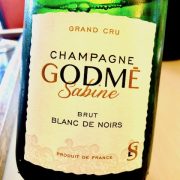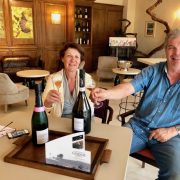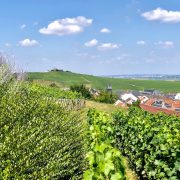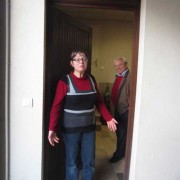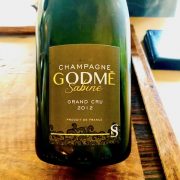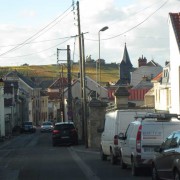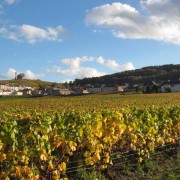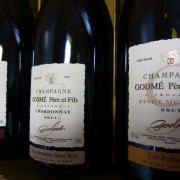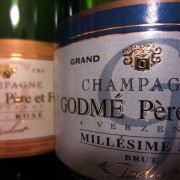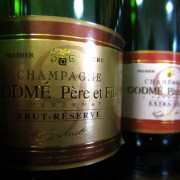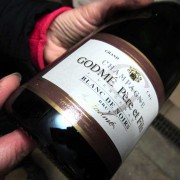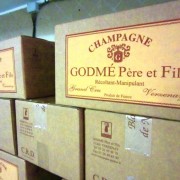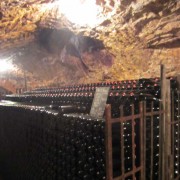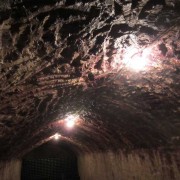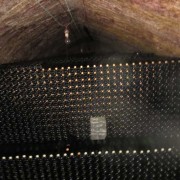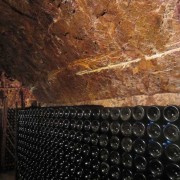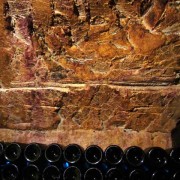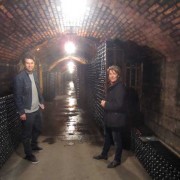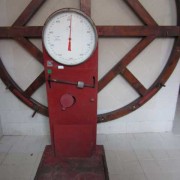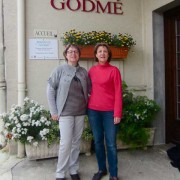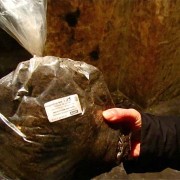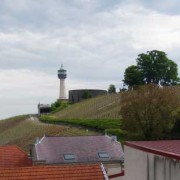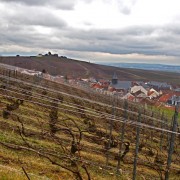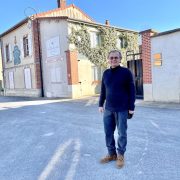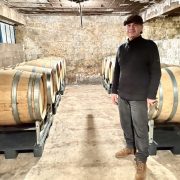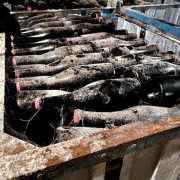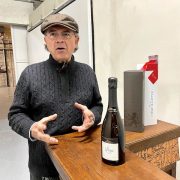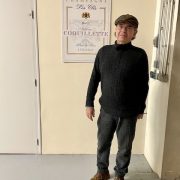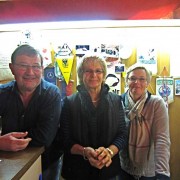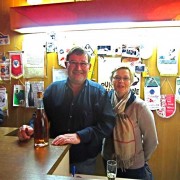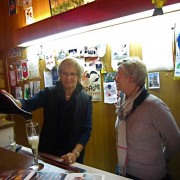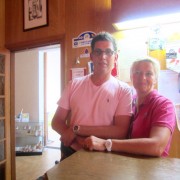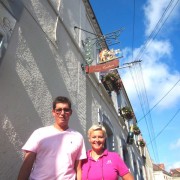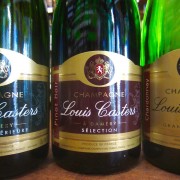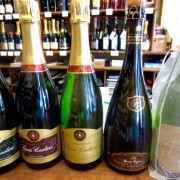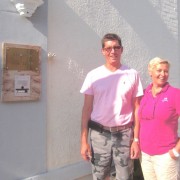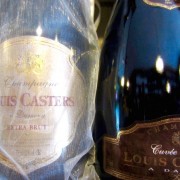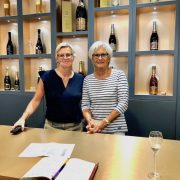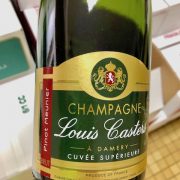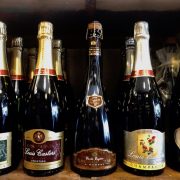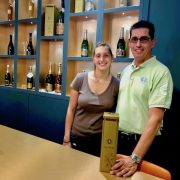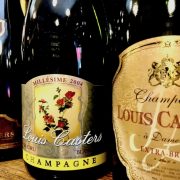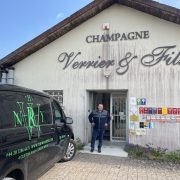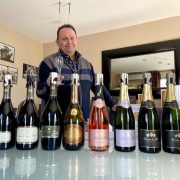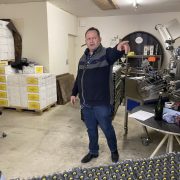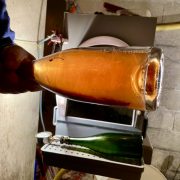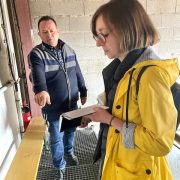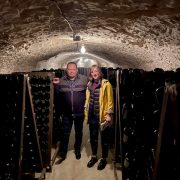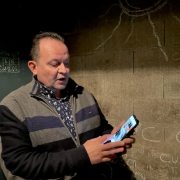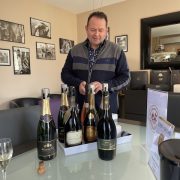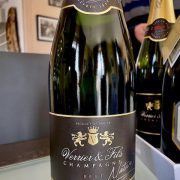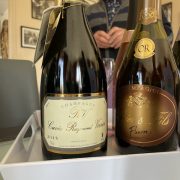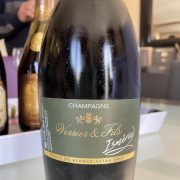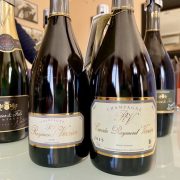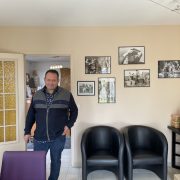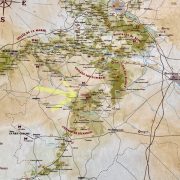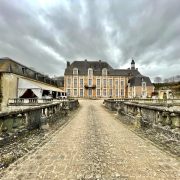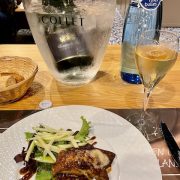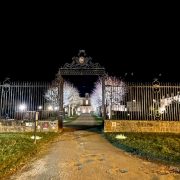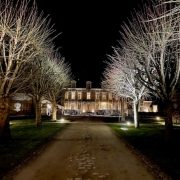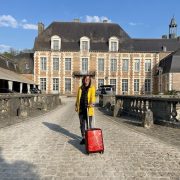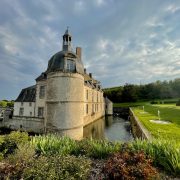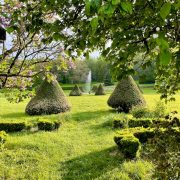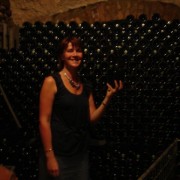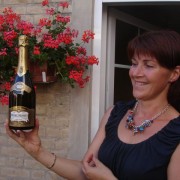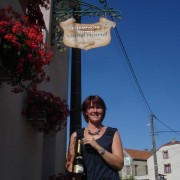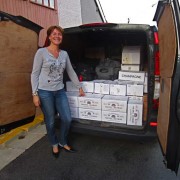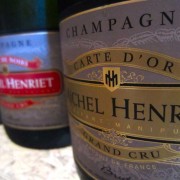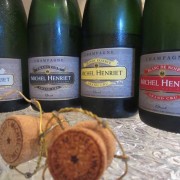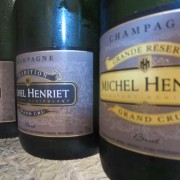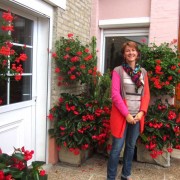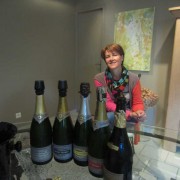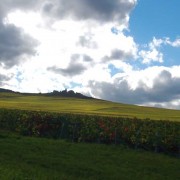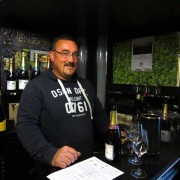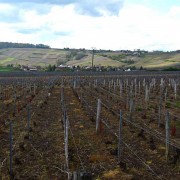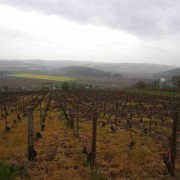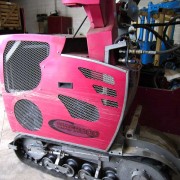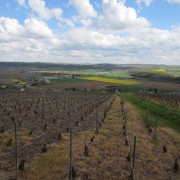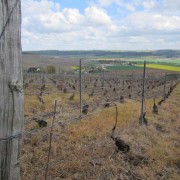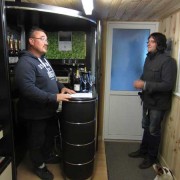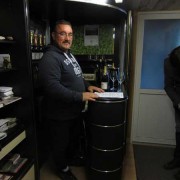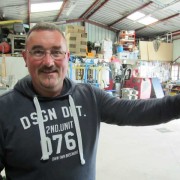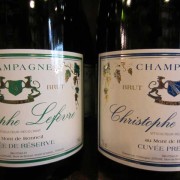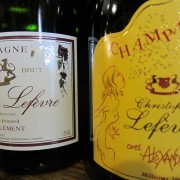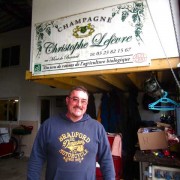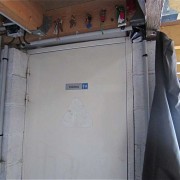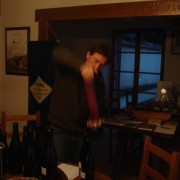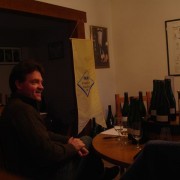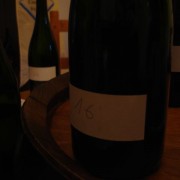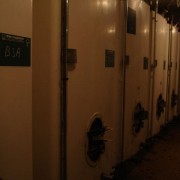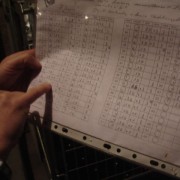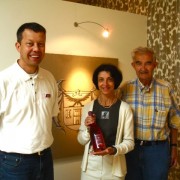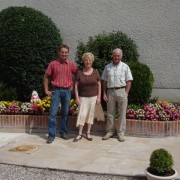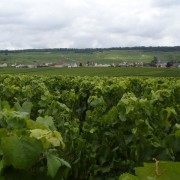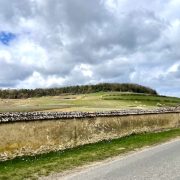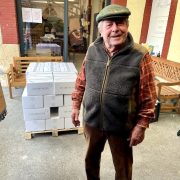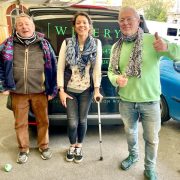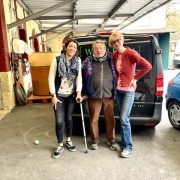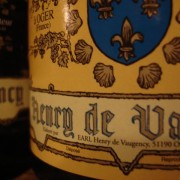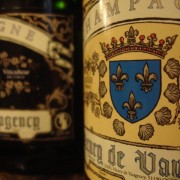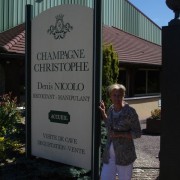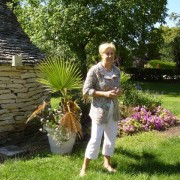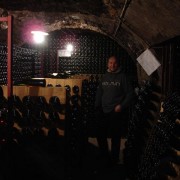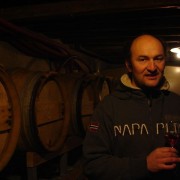Champagne is vast. The northern sections fan out from Epernay. North across the chalky Montagne de Reims towards Reims, west along the Marne Valley towards Paris, then due southwards, the Chardonnay slopes called the Cote des Blancs. At the end of the Cote des Blancs is a small sub-region called the Coteaux du Petit Morin. South of there is the Sezannais, also best known for its Chardonnay. Way further south, there is Montgueux, to the west of Troyes. Finally, in the bottom right hand corner, there is the Aube (also known as the Cote des Bar), our fertile hunting ground for smaller family Champagnes.
Amyot (Loches-sur-Ource/Aube)
In the bottom right hand corner of the Champagne region, half-way between Reims and Dijon, is the Aube, also known as the Cote des Bar. Here, off the beaten track, the tiny village of Loches-sur-Ource is the very rural home of Champagne Amyot. We have been working with Amyot for 18 years. The domaine is run by two brothers, Vincent and Bertrand, and Vincent’s wife Annick (who was known to us as Madame Amyot for the first 17 years). They speak an impenetrable, heavily-accented local dialect. Their champagne Carte Or Brut (a Blanc de Noirs – 100% Pinot Noir, grown on sandy soil) is the biggest selling item in The Winery – always powerful, big and biscuity. At recent blind taste-offs of champagnes versus a spread of sparkling wines for City clients, it came out top, even above vintage champagnes.
Saint Chamant (Epernay/Cote des Blancs)
Charming 80-something Monsieur Christian Coquillette of Saint Chamant is the postcard picture of a more senior vigneron – lean, lively, moustache, occasionally sporting a beret, poodle. Christian whizzes around in his beaten-up van between his labyrinthine cellars under Epernay and his old Chardonnay vines in Chouilly, the first Grand Cru village on the Cote des Blancs. Champagne made from 100% Chardonnay, known as Blanc de Blancs, is fresh and lemony when young and becomes magnificently nutty with age. Biscuity, deep, round and rich, yet always with the background freshness of Chardonnay. From time to time we take some of his smooth Cuvee Creme, racy Rose and his Brut Integrale, the driest of dry Champagnes. We tend to major on his vintage Blanc de Blancs – a perrenial hit at The Winery. 1992, 1996, 1998, 1999, 2002s are all long gone. We have two more hits of 2005 before moving on to the 2006s.
Marie-Noelle Ledru (Ambonnay/Montagne de Reims)
We have been circling Marie-Noelle Ledru for almost two years. It was Arnaud at the fabulous Le Channel Restaurant in Calais who gave us our first taste. Deep Grand Cru Ambonnay flavour with pronounced freshness. Wonderful. Our first visit introduced us to her entire range. Unfortunately she had nothing left to sell. We called again before Christmas. “Sorry, I’m off to Tokyo tomorrow and I still don’t have much right now.” So we phoned again on our trip in March. Her friend answered – “I don’t think she has any, but I’ll ask her when she gets back. She’s out in the vines, on her tractor right now”. Luckily for us Marie-Noelle managed to scrape together some cases to bring back in our van.
She has just 3 hectares, which she does on her own with just one worker – no wonder she doesn’t have much to sell!
Andre Fays (Celles-sur-Ource/Aube)
Solera. Champagne. Solera. Champagne? That caught our attention when we were on one of our emergency pick-up trips to France in March. Meet Marie Fays of Andre Fays in Celles-sur Ource. Solera? Yes, you draw enough out of the tank to bottle and fill up with the latest vintage. The tank has every vintage from 2013-2020. Another (very local) peculiarity is a 100% Pinot Blanc bottling called Etincelles.
What we weren’t expecting was the high quality and sheer deliciousness of her other Champagnes. Tradition, Reserve, Prestige and Rose. Boom. In the van and on our shelves.
Sabine Godme (Verzenay/Montagne de Reims) ORGANIC
You can make out the village of Verzenay as you thunder south of Reims on the Autoroute des Anglais towards the Autoroute du Soleil. It nestles below the tree line on the Montagne de Reims (which is more of a gentle incline than a mountain) – the village with a windmill to its west and a lighthouse to its east. Why is there a lighthouse this far from the sea? It was built by a grower called Joseph Goulet to remind his homesick wife of Brittany and is now a wine museum.
Godme is a small family domaine run until recently by two sisters, Sabine and Dominique, and Jean-Marie Guillaume, Sabine’s husband. They have been farming organically since 2004 and certified in 2013. There has been a small reorganization recently as the two sisters have divided their domaine in readiness for the next generation. We noticed recently that the label has also undergone some radical change. Sabine’s daughter Marie is now involved – she’s fresh out of college and keen to bring some of her fresh perspective on “Le Marketing”. Whichever labels you might prefer there is no doubting the sheer quality of their Champagnes.
Brut Reserve is the Godmes’ calling card, a blend of 70% Chardonnay, 15% Pinot Noir and 15% Pinot Meunier from 20 parcels of 1er Cru vines. The quality is always extremely high, thanks in part to the inclusion of 50% of Reserve wine from earlier vintages. Dosage is 7g.
The Blanc de Noirs is round, fragrant, fruits of the forest nose, deep, mouth-filling and very long. We adore this very stylish Champagne made with 100% Pinot Noir from Grand Cru vineyards in Verzenay and the neighbouring village of Verzy. 40% was kept in oak, which, in Champagne can provide an extra broadness and just a tiny twist of spice and hazelnut. Dosage is 6g.
The beautiful, fresh, classy Blanc de Blancs is from Chardonnay vines in Villers-Marmery the next village clockwise around the Montagne from Verzy. Dosage is 7g.
Sabine’s vintage bottlings tend to be 60% Pinot Noir/40% Chardonnay with dosage around 5g. Always ripe, always balanced.
The Grand Cru Extra Brut, now labelled “Terre de Verzenay”, is sensational. High class, intense, expressive, yet not showy. Effortless. 60% Pinot Noir/40% Chardonnay, dosage 4g.
They have been collaborating with several other growers on a shared bottling called 17 Cuvee. It’s a blend of all 17 Grand Crus from the 2017 vintage and should be available between 2022-2024.
Stephane Coquillette (Chouilly/Cote des Blancs)
We go way back with Stephane Coquillette. We have been working with his lovely father, Christian, whose Saint-Chamant Champagnes we have imported for two decades. Stephane’s daughter Diane was an intern in our shop 15 years ago.
Shortly after we began with Saint-Chamant, Christian, the proud father, took us to visit his son’s brand new winery in Chouilly, at the north end of the Cote des Blancs. That must have been 2002. Stephane and his wife Marie-Helene started in 2001.
A contrasting style to his father, Stephane makes contemporary, chic, dry Champagnes from Chardonnay vines in Chouilly & Cuis and Pinot Noir from Ay & Mareuil. We adore them both!
Barrat-Masson (Villenauxe-La-Grande/Sezannais) ORGANIC
Barrat-Masson in Villenauxe-la-Grande, an hour south of Epernay cross-country. Aurelie & Loic make laser-focused, intense champagnes. All bio, all brut nature, all serious.
Louis Casters (Damery/Vallee de la Marne)
Champagne is often made from red grapes which are pressed and separated from their skins to avoid taking on the colour. Usually this would be Pinot Noir. Pinot Meunier is the other red grape, considered in the past to be a “filler”, several growers are now making single bottlings which are becoming increasingly fashionable with their bold, upfront flavours. Casters make a single varietal bottling called Cuvee Superieure. Their Cuvee Eugene is stunning. Barrel fermented Pinot Noir blended with their best parcel of Chardonnay.
Francois Seconde (Sillery/Montagne de Reims)
As you sweep southwards along the Autoroute des Anglais, just after Reims on the chalky Montagne de Reims (which is more of a gentle incline than a mountain), you pass the Grand Cru villages of Sillery on your left and Verzenay on your right. For several centuries Sillery was best known for its still white wine. In the 1700s, Edme Beguillet, adviser to the King, notary in Dijon and oenologue, was famous for his dislike of growers in Champagne but spared the wines of Sillery: “their quality is so superior that only the King deserves them”. Jean-Jacques Rousseau, philosopher and influencer in the Age of Enlightenment raved about the wines of Sillery and their onion peel colour.
Francois Seconde is the only grower to make a pure Sillery Champagne. Francois left school at the age of 14 and worked in the vineyards. He bought his first parcel of vines in 1972 and rented others. By 1976 he had 3 hectares and, with the help of his wife, Anne-Marie, started making Champagne. Today they have 5.5 hectares. When we first visited Francois, Anne-Marie and Jerome Groslambert, we were taken by the very discreet signposting: a side street in the village, a very small sign on the gate outside a bungalow. Not until you pass behind the house does the much more substantial winery building reveal itself. The tasting room and labelling machine are under the bungalow.
Jerome Groslambert is from Reims. Following his studies he worked in Bergerac and then Vouvray in the Loire valley before moving back to work for a succession of different Champagne producers, large and small. He joined Francois Seconde in 2009 and was well-established before Francois’ unfortunate and untimely passing in 2018.
The quality of their Champagnes is outstanding – even their ‘entry-level’ bottling is Grand Cru: 2/3 Pinot Noir, 1/3 Chardonnay. Elegant and refined.
Cuvee Clavier, the one with the label that (now discretely) references a piano keyboard: more white than black grapes (geddit? More white keys than black), 2/3 Chardonnay and 1/3 Pinot Noir.
The exquisite ‘La Loge’ is a Blanc de Noirs, 100% Sillery, 100% Pinot Noir from the best parcels of 40 year-old vines. Pure red fruit and brioche in the nose, structured, a wonderful combination of power and finesse.
There’s the unpronounceable ‘Puisieulx’, 50/50 Pinot Noir/Chardonnay from the tiny village of Puisieulx in tiny quantities. It’s intense.
Les Sermiers is a recent addition to the range, 100% Chardonnay, beautifully fresh but not bracing. Mouthfilling. Delicious.
As with most Rose Champagnes, Francois Seconde’s is made by blending a still red wine with Blanc de Noirs (the white base wine made by taking the juice off the red skins). You don’t need much red wine for the blend and it’s much easier to get the exact shade of Rose you want than using the Saignee method, leaving it on the skins and trying to judge the exact moment to separate the juice before it takes too much colour. We adore their Rose Champagne – it has fruit, freshness and body but is not over-the-top. Very fine and finely-judged.
Verrier (Etoges/Coteaux du Petit Morin)
09.15h one Monday morning in April at Champagne Verrier in Etoges on the little known Coteaux du Petit Morin, sandwiched between the Cote des Blancs and the Sezannais. We were brought here by a bottle of Emmanuel Verrier’s Champagne Tradition that we drank at Chateau d’Etoges one frigid February night. Aromas of citrus zest & lilac (?!) in this blend of mainly Pinot Meunier with Chardonnay & Pinot Noir. Emmanuel’s entire range is fabulous but another standout for us is his broad, rich 2015.
Vautrain-Paulet (Dizy/Vallee de la Marne)
How did we find the boldly perfumed Vautrain-Paulet from the strangely appropriately named village of Dizy? We first tasted it at the shiny, metropolitan styled Restaurant La Banque in Epernay. La Banque is an excellent addition to the Epernay restaurant landscape, partly thanks to its long list of small growers’ Champagnes by the glass. A great place to research and orientate. We were concientiously wading through ten glasses of Champagne from different growers when we were mugged by the Vautrain-Paulet.
Despite the grand facade, Arnaud Vautrain produces just 30,000 bottles each year from vines in Dizy and Ay.
Jean Velut (Montgueux)
The wind roars across the flat plains of Champagne 100kms south of Epernay. There is just one small hill – it’s just west of the city of Troyes and covered with vines, many of them Chardonnay. The village at the top of the hill is Montgueux, recently hailed by a French Journalist as “the Montrachet of the Cote des Bars”, and that’s where we found Denis and Anne Velut. After finishing his studies (and an internship in Burgundy at Lafarge, the benchmark grower in Volnay), their 27 year-old son Benoit has recently joined the domaine.
Their range is impressive across the board. Cuvee Tradition is 80% Chardonnay, 20% Pinot Noir with fresh citrus, lemon sorbet notes, some caraway, clean, clear and lively.
Cuvee Speciale is 100% Chardonnay – the speciality of Montgueux. Their vintage bottlings are always round and deep. Latest addition to the line-up is a Brut Nature – with zero dosage. Same base wine as the Cuvee Speciale, a blend of 2001 and 2002 bottled in 2004. Excellent.
Every time we visit, ex-teacher Anne Velut, who is a keen pastry chef, offers us a little something. This time was a “sucre sale”, a flat croissant-like sweet and salty pastry filled with apple compote and foie gras. Perfect with a glass of their 2004 vintage Champagne.
Michel Henriet (Verzenay/Montagne de Reims)
You can make out the village of Verzenay as you thunder south of Reims on the Autoroute du Soleil. It’s the village nestling below the tree line on the Montagne de Reims (which is more of a gentle incline than a mountain), the one with the windmill and the lighthouse, which was a folly and is now a wine museum. Magali runs the tiny, fifth generation, family domaine which carries her father’s name. We all love her excellent bottlings from the 2004 vintage.
Christophe Lefevre (Bonneil/Vallee de la Marne) BIODYNAMIC
In the pecking order of Champagne sub-regions, the Marne valley has tended to be thought of as below the Montagne de Reims and the Cotes des Blancs and above the Aube. It might be time to rethink the order. We have increasingly found more striking, bold-flavoured champagnes along the valley that runs from Epernay west towards Dormans and on to Paris. Christophe Lefevre is west of Dormans, an hour’s drive from Epernay where vineyards are more scattered. His small winery is at the top of a steep slope in a hamlet called Mont de Bonneil. There wasn’t much viticulture in his family. His father was a farmer and, although his grandfather had a few vines, he farmed a mixture of crops. Christophe trained as a mechanic before catching the wine bug. He started in 1997 and has been biodynamic for almost a decade.
Apart from Cuvee Alexandrine (named after his daughter), which is 100% Chardonnay from a single parcel of vines, his other cuvees – Prestige, Reserve and Cuvee Clement (named after his son) are Pinot Meunier-heavy blends. Wild yeasts and old vines bring their influence. These are heavenly champagnes; bold, perfumed, open and polished.
On a more earthbound note, after loading up the van, we asked to use the WC. “Unfortunately, with the family house next door, I didn’t think to put a toilet in the winery. My wife and I have split up and I live with the kids in the next village. I’m afraid you’ll have to go into the woods, over there.” Fortunately it had stopped raining.
Forget-Chemin (Ludes/Montagne de Reims)
Each year Thierry Forget sells some of his output to Veuve Clicquot, jealously keeping the best grapes for himself. He is based in the village of Ludes, between Reims and Epernay, and makes his Champagnes in the classic Montagne de Reims style. He has 12 hectares of prime 1er Cru vines scattered over ten villages, four of which are in the Montagne on chalk. The base Champagne is a blend of three vintages made in equal parts of Pinot Noir, Chardonnay and Pinot Meunier. Thierry often runs out of his Rose. Every time there is a great vintage in the area, he makes one or two barrels of old vine Pinot Noir which he blends to make his Rose Champagne.
Bernard Tornay (Bouzy/Montagne de Reims)
Natalie, who runs the family winery that bears the name of her retired father Bernard, can trace their roots in the village back to the 1600s. That village is Bouzy, on the Montagne de Reims (a rather grand name for a gentle hill, crowned by a forest between Reims and Epernay). They went independent 4 generations ago, when everyone had livestock, vegetables, grain and some rows of Grand Cru vines on the chalky Bouzy soil. Vieille Reserve is a classic blend of 70% Pinot Noir and 30% Chardonnay from the 2002 and 2003 vintages. It is deep and rich, with a vigorous body, thanks to the 25 year-old vines. We also mustn’t forget the racy finish.
Leclerc-Briant (Epernay) BIODYNAMIC
UK Premiere of Leclerc-Briant’s biodynamic Champagnes from two single vineyards around the village of Cumieres across the river Marne from the city of Epernay. Biodynamic is the extreme end of organic farming with every decision ruled by the Lunar Calendar. Both made with wild yeasts, the Chevres Pierreuses (stony goats) has a striking, almost herbal aroma that is constantly changing. Crayeres is broader and more opulent.
Also check out their Rose Champagne, called Rubis. Instead of making their Rose by blending still red wine (Pinot Noir) into their base Champagne, as most growers do, they make it by leaving the juice on the skins of their red grapes until it is the exact colour they are looking for before briskly drawing off the juice and then fermenting as normal. This is a very risky process.
Delavenne (Bouzy/Montagne de Reims)
This is the everyday story of a family Domaine in the village of Bouzy, started 4 generations ago when everyone had livestock, vegetables, grain…and some rows of Grand Cru vines on chalky Bouzy soil. The current Madame, Marie-Paule, was from the neighbouring village of Cramant, duly bringing a parcel of Cramant vines to the marriage. Their Cuvee Tradition is 60% Pinot Noir and 40% Chardonnay. They tell us “there is never any Pinot Meunier in Grand Cru.” It is very impressive – fresh and bright in the nose with a vigorous body, thanks to the 25 year-old vines. There’s even a savoury tang at the end.
Gerard Dubois (Avize/Cote des Blancs)
Gerard Dubois retired in 2008. He loves it. “I have given my vines to my brother and nephew, I have a full cellar, can do a few meetings with my favourite clients, have lunch with my Mother more frequently and go Scuba-Diving in the Red Sea.” Not that he ever looked particularly stressed before, he is tanned and very smiley now. We always take his delicious vintage Blanc de Blancs, 100% Chardonnay from the legendary vineyards around his village of Avize. We recently picked up his Reserve Cuvee and two vintages; 2012 and 2003(!), Also a Cuvee Tradition labelled Gaston Lemaire. His wines often make us think of Meursault with bubbles. Yum.
Tribaut-Schloesser (Romery/Vallee de la Marne)
Our recent trawl around Champagne was long and gruelling. The hard work at the chalk face is etched in our faces (and waistlines). After the daily agony of tasting Champagne from dawn until well after dusk comes the pleasure of returning with a full vanload of bubbly beauties.
UK Premiere of this delicious, utterly classic, Non-Vintage Brut Champagne from Tribaut-Schloesser, a small family domaine in the small village of Romery tucked in a hollow at the Epernay end of the Marne valley. Utterly classic in the sense that it’s a blend of all three varietals: 40% Pinot Noir from parcels in the Montagne de Reims, 30% Chardonnay from the Cote des Blancs and 30% Pinot Meunier from their own village in the Vallee de la Marne. Classic too as it’s a blend of multiple vintages; 2007, 2006 with some older, Reserve wines. We were struck by the sensory journey this wine takes you on. A journey to the centre of Champagne, as it were. Do not miss their top-of-the-range Cuvee l’Authentique, a brilliant Champagne made from their best parcels, the old fashioned way with long bottle aging under cork rather than crown.
Henry de Vaugency (Oger/Cote des Blancs)
Sounds shallow but it was the label which made us want to try Henry de Vaugency. Spotted recently at 10 metres across a restaurant in Epernay with all the Fleur de Lys and bold use of colour, we were slightly sceptical about how the contents may taste. Against all our preconceptions the wine was delicious – classic Cote des Blancs Chardonnay. Right in the centre of the village, the de Vaugency domain is an eccentric set-up. Pascal Henry is the son-in-charge. His parents started a collection of marriage artefacts and now run a “Museum of Love” from the same location. There is something fabulously Gracelands about it – a private shrine not to Elvis, but Marriage. Hope you (like us) fall in love with these champagnes.
Christophe (Colombe-le-Sec/Aube)
A family Domaine for 3 generations in the tiny village of Colombey-les-Sec, near the de Gaulle memorial at Colombey-les-Deux-Eglises. Across the range they are beautifully made, with impressive complexity, bright freshness and good depth of flavour. Tradition is 80% Pinot Noir with 20% Chardonnay from a sunny slope overlooking the village.
Georges Laval (Cumieres/Vallee de la Marne) BIODYNAMIC
Georges Laval, along with Jacques Beaufort above, was one of the pioneers of Bio-dynamism in Champagne. Now made by his son Vincent, the wines are high-class with their complex fennel, caraway nose and classic Cumieres raciness. We often think of the village of Cumieres as something of a Montagne de Reims/Cote des Blancs hermaphrodite – plenty of Pinot but also more Chardonnay present than usual, providing racy freshness more often associated with the Cote des Blancs just across the Marne. Vincent also showed us a barrel of 100% old-vine Pinot Meunier which, if all goes well, he will bottle separately. We hope so – it was fascinating.
